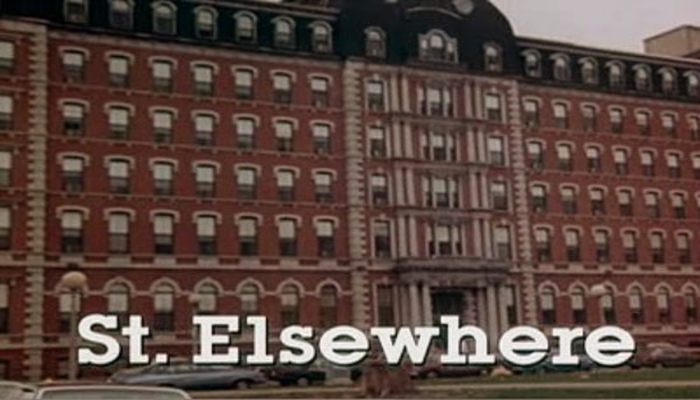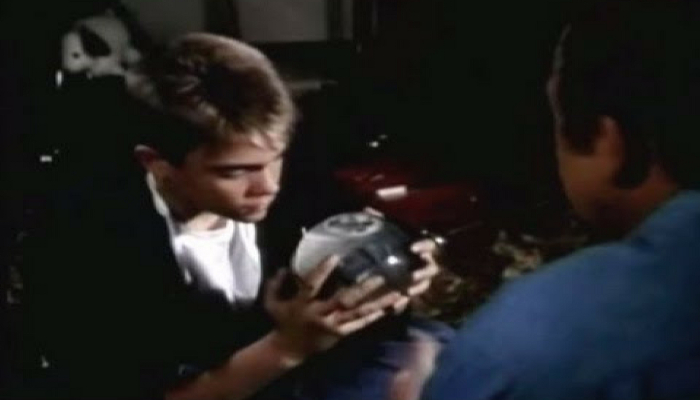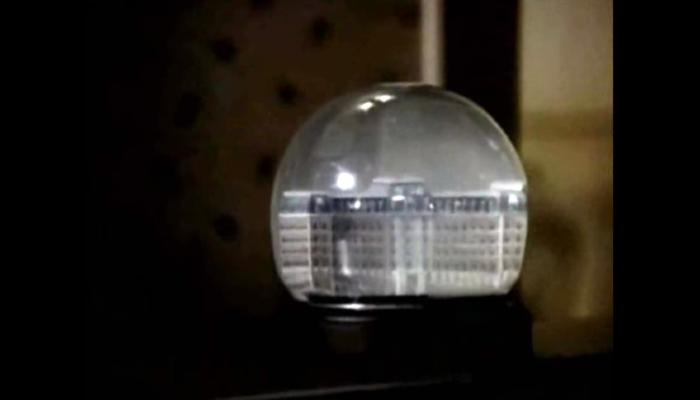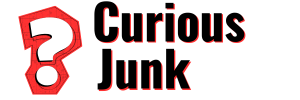
St. Elsewhere had a great run on prime-time television from 1982 – 1988. It centered around St. Eligus hospital in Boston, and at the time was considered the “Hill Street Blues” of medical shows. Coming across as a prime-time soap opera at times, the show also prided itself on its realistic portrayal of life on the edge of death. Patients didn’t always make it, doctors screwed up at times, and the staff’s lives weren’t just portrayed in the hospital. There was ample time devoted to their personal lives as well.
The show featured moments of high comedy and at the same time pure surrealism. There were stories like the one where Dr. Peter White became a serial rapist before being shot and killed by a nurse. And the sad story of Dr. Wendy Armstrong, who committed suicide after a misdiagnosis resulted in the death of an unborn baby. But it wasn’t always intense drama, as the show rewarded its viewers by referencing other TV shows like when some of the characters visited the bar Cheers.
But it’s the final scene of the entire series that may be it’s most iconic, and the crux of one of the most thought-provoking theories in the history of television.
As the final episode is winding down to its final moments, St. Eligus Hospital can be seen under a light snowfall. The scene then cuts to 10-year-old Tommy Westphall, who is the autistic son of hospital administrator Dr. Donald Westphall. Dr. Westphall walks in, but he’s not a doctor…he’s dressed as a construction worker. One of his associates, Dr. Auschlander too, but in this scene, he’s Tommy’s grandfather. Westphall makes a comment to Auschlander that he doesn’t understand this autism thing. He explains that Tommy just sits there all day long staring at that toy. The toy? It’s a snow globe, and inside of it is St. Eligus Hospital.

The implication is that during the entire run of the show, every episode and every character of St. Elsewhere had only existed in Tommy’s mind. With the twist ending, the writers rendered not only their own show a fantasy, but dozens of other shows and characters as well.
Let me explain. If St. Elsewhere was all in Tommy’s mind, then so was every other show and character that the show crossed over with. Here are some examples of how it works:
- St. Elsewhere character Dr. Roxeanne Turner appeared on Homicide: Life on the Street in 1998. Because of that crossover, we can conclude that Homicide was a creation of Tommy’s mind as well.
- Homicide’s Detective John Munch was moved to Law & Order: SVU in 1999, meaning that that show was also in Tommy’s head, as are all the various Law & Order programs since they all take place in a common TV universe.
- In a 1985 episode of S. Elsewhere, Dr. Westphall and Dr. Auschlander visit the Cheers bar, bringing Cheers and it’s spin-offs Frasier and Wings into the St. Elsewhere world of Tommy’s brain.
- Cheers crossed over with The John Larroquette Show, adding it to Tommy’s fantasy.
- The main character of Larroquette worked at a bus station built by a company called Yoyodyne. A decade later on the supernatural drama Angel, Yoyodyne was a client of the law firm Wolfram and Heart. Angel was a spin-off of Buffy: The Vampire Slayer, so both of them were Tommy Westphall’s idea as well.
So far, over 280 different television shows have been linked back to St. Elsewhere and Tommy’s fantasy. Shows including I Love Lucy, Leave it to Beaver, Gilligan’s Island, The Brady Bunch, MASH, Seinfeld, Home Improvement, Scrubs, Friends, Arrested Development, The Wire, Coach, The Drew Carey Show, Grace Under Fire, Ellen, Six Feet Under, Las Vegas, The Office, Heroes, Bewitched, Three’s Company, and Lost.
That’s quite the fantasy world that little Tommy Westphall created sitting in his chair staring at that snow globe.


Be the first to comment